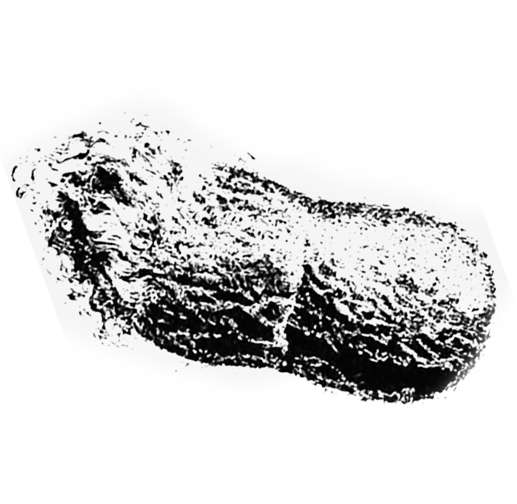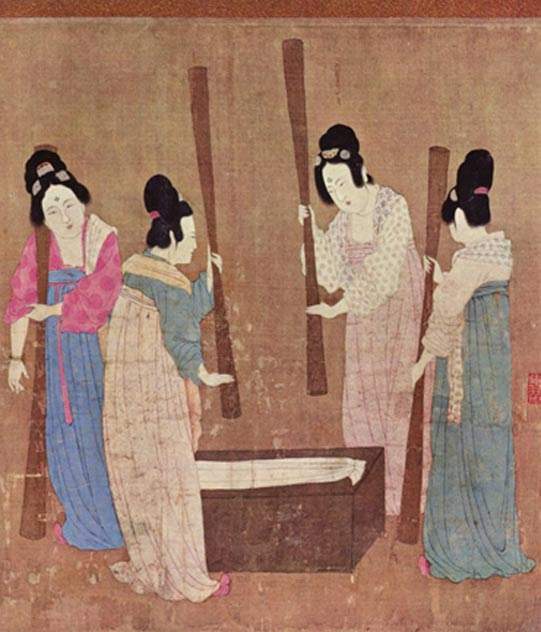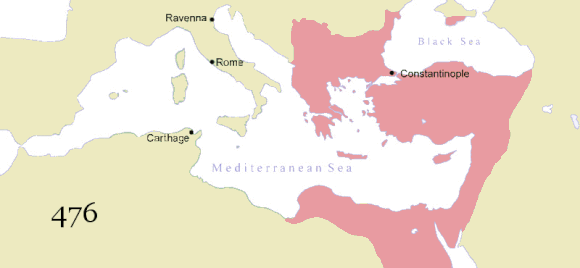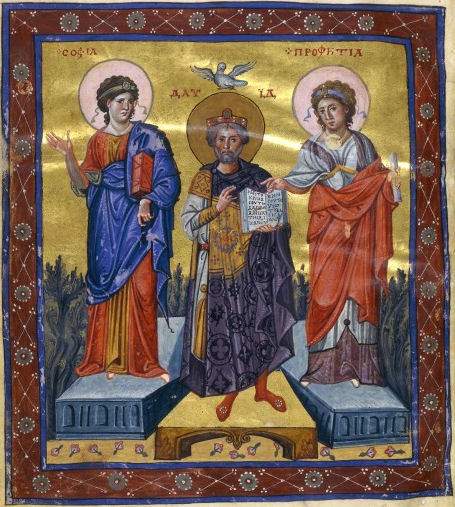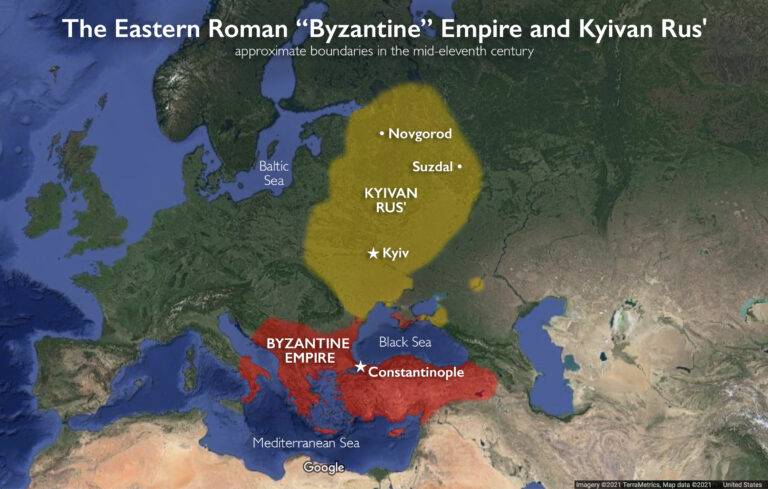Silk is a type of natural protein fiber that can be used to create textiles. This fiber is primarily made up of fibroin and is produced by certain insect larvae to create cocoons. The most well-known source of silk is obtained from the cocoons of mulberry silkworm larvae, which are commonly raised in captivity.The striking iridescent appearance of silk can be attributed to the prism-like shape of the silk fiber. This shape causes incoming light to refract at different angles, which produces the various colors we associate with silk fabric.
While there are several insects that can produce silk, moth caterpillars are the most commonly used source of silk for textile manufacturing. However, researchers have explored other types of silk that differ at the molecular level. Silk is primarily produced by insect larvae that undergo complete metamorphosis, but some insects such as webspinners and raspy crickets can produce silk throughout their lives. In addition to insects, silk production also occurs in other types of creatures such as hymenoptera (bees, wasps, and ants), silverfish, caddisflies, mayflies, thrips, leafhoppers, beetles, lacewings, fleas, flies, and midges. Various arachnids, such as spiders, are also well-known for their silk production abilities.
シルクは天然タンパク質繊維の一種で、織物を作るために使用することができます。この繊維は主にフィブロインで構成されており、ある種の昆虫の幼虫が繭を作ることで生成されます。シルクの最も有名な供給源は、一般的に飼育されている桑蚕の幼虫の繭から得られるものです。 絹の印象的な玉虫色の外観は、絹繊維のプリズムのような形状に起因しています。この形状により、入射した光がさまざまな角度で屈折し、絹織物から連想されるさまざまな色が生み出されるのです。
絹を生産できる昆虫はいくつかありますが、繊維の製造に最もよく使われているのは蛾の毛虫です。しかし、研究者たちは、分子レベルで異なる他のタイプのシルクを探っています。シルクは主に昆虫の幼虫が完全変態することで生産されますが、網目模様の昆虫やガラガラヘビなど、生涯を通じてシルクを生産できる昆虫もいます。 昆虫以外にも、ヒメバチ類(ハチ、スズメバチ、アリ)、シルバーフィッシュ、トビケラ、カゲロウ、アザミウマ、ヨコバイ、カブトムシ、ヒョウタン、ノミ、ハエ、ミドリムシなどの生物でシルクが生産されます。また、クモなどのクモ類も絹を生産することで知られています。
Throughout history, various types of wild silk produced by caterpillars other than the mulberry silkworm have been spun and utilized in different parts of the world, such as Eri silk in Assam, India. However, the production scale of these wild silks has always been significantly smaller than that of cultivated silks.The reasons for this are multifaceted. First and foremost, wild silks differ from their domesticated counterparts in color and texture, making them less uniform. Additionally, cocoons collected in the wild often have the pupa emerge from them before being discovered, leading to torn silk threads of shorter lengths. Finally, many wild cocoons are covered in a mineral layer that hinders the reeling of long strands of silk.
As a result, the only way to obtain silk suitable for textile production in areas where commercial silks are not cultivated was through labor-intensive carding. Some natural silk structures, such as spider webs, have been used in various ways without being unwound or spun. For example, spider webs were utilized as a wound dressing in ancient Greece and Rome, and as a base for painting starting in the 16th century. In the Aztec Empire, caterpillar nests were pasted together to create a fabric.
The production of silk originated in Neolithic China within the Yangshao culture (4th millennium BCE). Though it would later reach other places in the world, the art of silk production remained confined to China until the Silk Road opened at 114 BC, though China maintained its virtual monopoly over silk production for another thousand years. The use of silk within China was not confined to clothing alone, and silk was used for a number of applications, such as writing. Within clothing, the color of silk worn also held social importance, and formed an important guide of social class during the Tang dynasty.
Silk was cultivated to Japan at least before AD, and, by 552 AD, the Byzantine Empire managed to obtain silkworm eggs and were able to begin silkworm cultivation; the Arabs also began to manufacture silk at the same time. As a result of the spread of sericulture, Chinese silk exports became less important, although they still maintained dominance over the luxury silk market. The Crusades brought silk production to Western Europe, in particular to many Italian states, which saw an economic boom exporting silk to the rest of Europe. Developments in manufacturing technique also began to take place during the Middle Ages (5th to 15th centuries) in Europe, with devices such as the spinning wheel first appearing at this time. During the 16th century, France joined Italy in developing a successful silk trade, though the efforts of most other nations to develop a silk industry of their own were unsuccessful.
The Industrial Revolution changed much of Europe’s silk industry. Due to innovations in the spinning of cotton, cotton became much cheaper to manufacture, leading to cotton production becoming the main focus for many manufacturers, and causing the more costly production of silk to shrink. New weaving technologies, however, increased the efficiency of producing silk cloth; among these was the Jacquard loom, developed for the production of highly detailed silks with embroidery-like designs. An epidemic of several silkworm diseases at this time caused production to fall, especially in France, where the industry never fully recovered.
In the 20th century, Japan and China regained their earlier dominant role in silk production, and China is now once again the world’s largest producer of silk. The rise of new imitation silk fabrics, such as nylon and polyester, has reduced the prevalence of silk throughout the world, being a cheaper and easier to care for alternative. Silk is now once again thought of as a luxury good, with a greatly reduced importance compared to its historical heyday.
インド・アッサム州のエリシルクをはじめ、世界各地で桑蚕以外の毛虫が生産するさまざまな野生のシルクが紡がれ、利用されてきた歴史がある。しかし、これらの野生のシルクの生産規模は、養蚕シルクに比べると常に著しく小さい。その理由は多岐にわたるが、まず第一に、野生シルクは栽培シルクと色や風合いが異なり、均一性に欠ける。また、野生の繭は発見される前に蛹が出てくることが多く、絹糸の長さが短く破れることがある。さらに、野生の繭の多くは鉱物層に覆われていて、長い絹糸を巻き取ることができない。そのため、商業用シルクの栽培が行われていない地域で織物生産に適したシルクを得るには、手間のかかる梳毛(そもう)しか方法がありませんでした。また、蜘蛛の巣のような天然の絹織物には、巻き戻したり紡いだりせずに、さまざまな形で利用されてきたものがある。例えば、古代ギリシャやローマでは傷の治療薬として、16世紀からは絵画の下地としてクモの巣が利用されました。また、アステカ帝国では、毛虫の巣を貼り合わせて布をつくっていました。
絹の生産は、中国の新石器時代(紀元前4千年紀)の楊貴妃文化圏で始まりました。その後、世界各地に伝わったが、紀元前114年にシルクロードが開通するまで、絹の生産技術は中国に限定されたままだった。中国国内での絹の使用は衣服だけにとどまらず、文字などさまざまな用途に使われた。衣服の中でも、身につける絹の色は社会的にも重要であり、唐代には社会階級の重要な指標となった。少なくとも紀元前の日本には絹が栽培されており、紀元552年にはビザンツ帝国が蚕の卵を入手して養蚕を始め、同時期にアラブ人が絹の製造を始めている。養蚕が普及した結果、中国の絹の輸出は重要ではなくなったが、高級絹織物市場には依然として優位を保っていた。十字軍は西ヨーロッパに絹の生産をもたらし、特にイタリアの多くの国が絹を輸出して経済的なブームを見た。また、ヨーロッパでは中世(5世紀から15世紀)に製糸技術の発達が始まり、糸車などの道具が初めて登場しました。16世紀には、フランスがイタリアとともに絹織物貿易で成功を収めたが、他の多くの国々は絹織物産業を発展させることに成功しなかった。 産業革命は、ヨーロッパの絹織物産業を大きく変えました。綿花の紡績技術革新により、綿花の生産コストが大幅に低下したため、多くのメーカーが綿花生産を主力とし、コストのかかる絹織物の生産は縮小していきました。一方、絹織物の生産は、ジャカード織機などの新しい織機技術によって、刺繍のような細かい柄の絹織物を効率よく生産することができるようになった。この頃、蚕の病気が流行し、特にフランスでは生産が落ち込み、完全には回復しなかった。20世紀に入ると、日本と中国がかつての絹織物生産の主役の座を取り戻し、現在では中国が再び世界最大の絹織物生産国となった。ナイロンやポリエステルなどの新しいシルクの模造生地が台頭し、安価で手入れが簡単な代替品として、世界中でシルクの普及が減少しています。現在、シルクは再び高級品として扱われるようになり、その重要性は歴史的な最盛期に比べて大きく低下しています。
Silk has been an important part of Japanese culture for centuries, and the production of silk has played a significant role in the country’s economy and society.
The history of Japanese silk dates back to the 3rd century CE, when sericulture was introduced to Japan from China. Over time, Japan developed its own unique methods for silk production and became known for its high-quality silk fabrics.
During the Heian period (794-1185 CE), silk was used to make elaborate and colorful court costumes and accessories. The art of dyeing silk also flourished during this time, with the development of intricate techniques for creating intricate patterns and designs.In the Kamakura period (1185-1333 CE), silk production expanded to rural areas of Japan, and many farmers began to raise silkworms as a way to supplement their income. During the Muromachi period (1336-1573 CE), the use of silk in Japanese fashion became more subdued, with simpler, more elegant styles favored over the elaborate costumes of the Heian period.
In the Edo period (1603-1868 CE), silk production became even more widespread, with many regions specializing in different types of silk and silk products. Japan also became a major exporter of silk, with Japanese silk fabrics becoming popular throughout the world.
Today, Japan is still known for its high-quality silk products, including kimonos, obis, and other traditional clothing. Japanese silk fabrics are prized for their beauty, durability, and intricate designs, and are used in a wide variety of products, including home furnishings and accessories. In addition to its cultural significance, the production of silk has played an important role in Japan’s economic development. The silk industry has provided employment opportunities and helped to support rural communities, and has contributed to Japan’s reputation as a leader in textile production and design.
絹は何世紀にもわたって日本の文化の重要な一部であり、絹の生産は日本の経済と社会に重要な役割を果たしてきました。日本の絹の歴史は、中国から日本に養蚕が伝わった紀元前3世紀頃にさかのぼる。その後、日本は独自の製糸法を開発し、高品質の絹織物で知られるようになった。平安時代(794-1185)には、絹は精巧で色鮮やかな宮廷衣装や装身具に使われた。この時代には絹の染色技術も盛んになり、複雑な模様やデザインを作り出す技術が開発された。鎌倉時代(1185-1333)には、絹織物の生産が農村部にも広がり、多くの農家が収入を補うために蚕を飼うようになった。室町時代(1336-1573)には、日本のファッションにおける絹の使用はより控えめになり、平安時代の精巧な衣装よりもシンプルで優雅なスタイルが好まれるようになった。江戸時代(1603-1868)には、絹の生産がさらに盛んになり、多くの地域でさまざまな種類の絹や絹製品が作られるようになった。また、日本は絹の主要な輸出国となり、日本の絹織物は世界中で人気を博した。現在でも、日本は着物や帯などの伝統的な衣服に代表される高品質の絹織物で知られています。日本の絹織物は、その美しさ、耐久性、複雑なデザインが評価され、家庭用品やアクセサリーなど幅広い製品に使用されています。文化的な意義に加え、絹織物の生産は日本の経済発展にも重要な役割を果たしてきた。絹織物産業は雇用機会を提供し、農村地域を支えるとともに、日本が繊維生産とデザインのリーダーであるという評価に貢献しました。
Silk has a long history in Korea, dating back to at least the 1st century BCE. The production of silk played an important role in the country’s economy and society, and Korean silk fabrics were highly prized for their beauty and quality.
According to historical records, the kingdom of Goguryeo (37 BCE-668 CE) was one of the earliest producers of silk in Korea. Silk production expanded during the Three Kingdoms period (57 BCE-668 CE), with the kingdoms of Goguryeo, Baekje, and Silla all producing silk fabrics. In the Goryeo period (918-1392 CE), silk production continued to flourish, with the production of high-quality silk fabrics becoming a major industry.
During the Joseon period (1392-1897 CE), the production of silk became even more important, with the government actively promoting the growth of the silk industry. Silk production was encouraged in rural areas, and many farmers began to raise silkworms and produce silk fabrics as a way to supplement their income.
韓国における絹の歴史は古く、少なくとも紀元前1世紀には遡る。絹の生産は韓国の経済と社会で重要な役割を果たし、韓国の絹織物はその美しさと品質で高く評価された。歴史的な記録によると、高句麗(紀元前37年~668年)は韓国で最も早い時期に絹を生産した国の一つです。三国時代(紀元前57年~668年)には、高句麗、百済、新羅が絹織物を生産し、絹織物の生産は拡大しました。高麗時代(918~1392年)にも絹織物の生産は盛んになり、高級絹織物の生産が主要産業となった。朝鮮時代(1392~1897年)には、絹織物の生産はさらに重要性を増し、政府は絹織物産業の発展を積極的に推進するようになった。農村では絹の生産が奨励され、多くの農民が収入を補うために蚕を飼い、絹織物を生産するようになった。
Silk has a long history in India. It is known as Resham in eastern and north India, and Pattu in southern parts of India. Recent archaeological discoveries in Harappa and Chanhu-daro suggest that sericulture, employing wild silk threads from native silkworm species, existed in South Asia during the time of the Indus Valley civilisation (now in Pakistan and India) dating between 2450 BC and 2000 BC. Shelagh Vainker, a silk expert at the Ashmolean Museum in Oxford, who sees evidence for silk production in China “significantly earlier” than 2500–2000 BC, suggests, “people of the Indus civilization either harvested silkworm cocoons or traded with people who did, and that they knew a considerable amount about silk.”
India is the second largest producer of silk in the world after China. About 97% of the raw mulberry silk comes from six Indian states, namely, Andhra Pradesh, Karnataka, Jammu and Kashmir, Tamil Nadu, Bihar, and West Bengal. North Bangalore, the upcoming site of a $20 million “Silk City” Ramanagara and Mysore, contribute to a majority of silk production in Karnataka.In Tamil Nadu, mulberry cultivation is concentrated in the Coimbatore, Erode, Bhagalpuri, Tiruppur, Salem, and Dharmapuri districts. Hyderabad, Andhra Pradesh, and Gobichettipalayam, Tamil Nadu, were the first locations to have automated silk reeling units in IndiaIn the northeastern state of Assam, three different types of indigenous variety of silk are produced, collectively called Assam silk: Muga silk, Eri silk and Pat silk. Muga, the golden silk, and Eri are produced by silkworms that are native only to Assam. They have been reared since ancient times similar to other East and South-East Asian countries
シルクはインドで長い歴史を持っている。東インドや北インドではレシャム、南インドではパトゥと呼ばれています。最近のハラッパやチャンフダロでの考古学的発見から、紀元前2450年から紀元前2000年のインダス川流域文明(現在のパキスタンやインド)の時代には、在来種のカイコから取れる野蚕の糸を使った養蚕が南アジアに存在したことが示唆されている[25][26]。 オックスフォードのアシュモリーン博物館のシルク専門家であるシェラフ・ヴァインカー氏は、中国でのシルク生産の証拠は紀元前2500年から2000年より「かなり早い」と見ており、「インダス文明の人々はカイコの繭を収穫するか、収穫する人々と取引をしており、シルクについて相当な知識があった」と示唆しています。
インドは中国に次ぐ世界第2位の絹の生産国である。生糸の約97%はインドの6つの州、すなわちアンドラ・プラデシュ、カルナタカ、ジャンムー・カシミール、タミル・ナードゥ、ビハール、西ベンガルから産出される。 カルナータカ州では、2000万ドルを投じた「シルクシティ」の建設が予定されている北バンガロール、ラマナガラ、マイソールなどがシルク生産の大部分を担っています。 タミルナドゥ州では、桑の栽培はコインバトール、エロード、バガルプリー、ティルプール、セーラム、ダルマプリ地区に集中している。アンドラ・プラデシュ州のハイデラバードとタミル・ナードゥ州のゴビシェティパラヤムは、インドで初めて自動製糸装置を設置した場所である。 北東部のアッサム州では、3種類の土着品種のシルクが生産されており、これらを総称してアッサムシルクと呼んでいます。ムガシルク、エリシルク、パットシルクです。ムガシルク、エリシルク、パットシルクは、アッサム地方にのみ生息する蚕によって作られる黄金のシルクです。他の東南アジア諸国と同様、古くから飼育されています。
After silk originated in ancient China and India, where the practice of weaving silk began around 2,640 BCE, Chinese merchants spread the use of silk throughout Asia through trade. Archaeologists found the first fibers of silk in Thailand to be over 3,000 years old in the ruins of Ban Chiang. The site is considered to be one of Southeast Asia’s oldest civilization.
According to Chinese diplomat, Zhou Daguan, who was sent to Cambodia by Temür Khan, recorded that Siamese people skilled in Silk production: “In recent years people from Siam have come to live in Cambodia, and unlike the locals they engage in silk production. The mulberry trees they grow and the silkworms they raise all come from Siam. (They have no ramie, either, only hemp.) They themselves weave the silk into clothes made of a black, patterned satiny silk. Siamese women do know how to stitch and darn, so when local people have torn or damaged clothing they ask them to do the mending.” Based on Anna Harriette Leonowens’s record, Siam was also the exporters of cotton, silk, and raw silk.However, silk produced on the Khorat Plateau was generally only used for private consumption, with the Thai court preferring to purchase Chinese silk imports. There was an attempt in the early 20th century to develop the industry, with the help of a Japanese sericulture expert, Kametaro Toyama. But this attempt failed due to a lack of interest locally to produce for a larger market.
After World War II, former OSS officer Jim Thompson decided that silk would be popular back home. Through his connections in New York, he began marketing the product as a traditional Siamese fabric. In fact, the material he created had little relationship to what had previously been produced in the country. But through clever branding and by developing a range of “Thai” patterns, he managed to establish Thai silk as a recognizable brand. Writing in the Bangkok Post in 1949, Alexander MacDonald noted that, “…out of a number of scattered remains of history, from cultures borrowed from Siam’s neighbors, and from colonies of fat and lazy Siamese silk worms, Jim Thompson is trying to build a modest business.” Throughout the 1950s, Thais remained little interested in Thai silk and considered it generally suitable only for fancy dress. Rather, it was American tourists who sustained the local development of a silk industry in Thailand. In 1951, The King and I opened on Broadway, featuring a depiction of the Thai court in the mid-19th century in which the costumes were all made using Thai silk. Created by Irene Sharaff, the production served to promote the material to the American audience and fueled interest in the country.
古代中国やインドで絹を織る習慣が紀元前2640年頃に生まれた後、中国の商人が貿易を通じてアジア各地に絹の使用を広めました。考古学者は、タイで最初のシルクの繊維をバン・チャンの遺跡で3,000年以上前に発見しました。この遺跡は東南アジアで最も古い文明のひとつとされています。テムール・カーンによってカンボジアに派遣された中国の外交官、周大観は、シャムの人々がシルクの生産に長けていることを記録しています。「近年、シャムの人々がカンボジアに住むようになり、現地の人々とは違ってシルクの生産に従事している。桑の木も蚕もすべてシャムから持ってきたものだ。(そのシルクを自分たちで織って、黒くて模様のあるサテンのようなシルクの服を作っています。シャムの女性は縫い方と裁ち方を知っているので、地元の人が破れたり傷んだりした衣服の繕いを彼女たちに頼むのです」。アンナ・ハリエット・レオノウェンズの記録によると、シャムは綿、絹、生糸の輸出国でもあった。しかし、コラート高原で生産される絹は一般に自家消費にとどまり、タイの宮廷は中国の輸入絹を好んで購入した。20世紀初頭、日本人の養蚕家・遠山亀太郎の協力を得て、絹織物産業を発展させようという試みがなされたことがある。しかし、この試みは、より大きな市場に向けた生産に地元が関心を示さなかったため、失敗に終わりました。
第二次世界大戦後、元OSSのジム・トンプソン(Jim Thompson)は、シルクは母国で人気が出ると判断。ニューヨークのコネクションを通じて、シャムの伝統的な織物として売り出し始めたのです。実際、彼が作った素材は、それまで国内で生産されていたものとはほとんど関係がありませんでした。しかし、巧みなブランディングと「タイ」柄の開発により、タイシルクを認知度の高いブランドとして確立させることに成功しました。1949年にバンコクポスト紙に寄稿したアレキサンダー・マクドナルドは、「…シャムの隣国から借りた文化や、太くて怠惰なシャム蚕のコロニーから、散在する歴史の遺物の中から、ジム・トンプソンはささやかなビジネスを構築しようとしている」と指摘しています。1950年代を通じて、タイ人はほとんど興味が残って、タイシルクと考え、一般的に適しているだけの仮装です。むしろ、それはアメリカの観光客は、地元の開発は、タイのシルク産業が維持された。1951年、ブロードウェイで上演された「王様と私」は、19世紀半ばのタイの宮廷を描いたもので、衣装はすべてタイシルクで作られていた。アイリーン・シャラフの演出により、この作品はアメリカの観客にタイシルクをアピールし、タイへの関心を高めることになった。
In the Torah (The Torah (/ˈtɔːrə, ˈtoʊrə/; Biblical Hebrew: תּוֹרָה Tōrā, “Instruction”, “Teaching” or “Law”) is the compilation of the first five books of the Hebrew Bible, namely the books of Genesis, Exodus, Leviticus, Numbers and Deuteronomy) is the compilation of the first five books of the Hebrew Bible, namely the books of Genesis, Exodus, Leviticus, Numbers and Deuteronomy), a scarlet cloth item called in Hebrew “sheni tola’at” שני תולעת – literally “crimson of the worm” – is described as being used in purification ceremonies, such as those following a leprosy outbreak (Leviticus 14), alongside cedar wood and hyssop (za’atar). Eminent scholar and leading medieval translator of Jewish sources and books of the Bible into Arabic, Rabbi Saadia Gaon, translates this phrase explicitly as “crimson silk” – חריר קרמז حرير قرمز.
In Islamic teachings, Muslim men are forbidden to wear silk. Many religious jurists believe the reasoning behind the prohibition lies in avoiding clothing for men that can be considered feminine or extravagant. There are disputes regarding the amount of silk a fabric can consist of (e.g., whether a small decorative silk piece on a cotton caftan is permissible or not) for it to be lawful for men to wear, but the dominant opinion of most Muslim scholars is that the wearing of silk by men is forbidden. Modern attire has raised a number of issues, including, for instance, the permissibility of wearing silk neckties, which are masculine articles of clothing.
律法の中で、ヘブライ語で “sheni tola’at” שני תולעתと呼ばれる緋色の布は、文字通り「虫の紅」と呼ばれ、杉材やヒソップ(za atar)とともに、ハンセン病の流行後の清めの儀式(レビ記14章)で使われたと説明されています。ユダヤ教の文献や聖書をアラビア語に翻訳した中世の著名な学者、ラビ・サーディア・ガオンは、この言葉を「真紅の絹」- חריر قرרימז と明確に訳しています。イスラム教の教えでは、イスラム教徒の男性が絹を身につけることは禁じられています。多くの宗教法学者は、女性的あるいは贅沢とみなされるような男性の衣服を避けることが禁止の理由であると考えています。絹の量(例えば、綿のカフタンに小さな絹の装飾を施すことは許されるかどうか)については議論がありますが、多くのイスラム教学者が男性の絹の着用は禁じられているというのが支配的な意見です。現代の服装では、例えば男性用の衣服であるシルクのネクタイの着用が許されるかどうかなど、様々な問題が指摘されている。
The Roman Empire was a powerful state that existed from 27 BC to 476 AD in the Mediterranean region. Silk was a highly prized luxury commodity in the Roman Empire, which was primarily produced in China and traded along the Silk Road. The Silk Road was a network of trade routes that connected the East and West, allowing for the exchange of goods, ideas, and culture.The Roman Empire’s relationship with silk was complex. Silk was highly valued in Roman society, but its production was a closely guarded secret of the Chinese. As a result, the Romans had to trade for silk at high prices, and it was only available to the wealthiest members of society.
Silk was used for clothing, such as robes and tunics, and was also used to make decorative items, such as wall hangings and curtains. The use of silk was seen as a sign of luxury and sophistication, and it became a symbol of the wealth and power of the Roman Empire. The trade in silk was not without its challenges. The Roman Empire had to compete with other empires and kingdoms for access to silk, and the journey along the Silk Road was dangerous and arduous. Bandits and harsh terrain could make the journey treacherous, and merchants had to be prepared to defend themselves and their goods.Despite these challenges, the Roman Empire continued to trade for silk, and the demand for this luxurious fabric remained high. The silk trade was an important part of the Roman economy, and it helped to fuel the growth and expansion of the empire.
HOW DID THE SILK ROAD WORK ?
From about the fourth century BC, the Greeks and the Romans began talking of Seres, the Kingdom of Silk. Some historians believe the first Romans to set eyes upon the fabulous fabric were the legions of Marcus Licinius Crassus, Governor of Syria. At the fateful battle of Carrhae near the Euphrates River in 53 BC, the soldiers were so startled by the bright silken banners of the Parthian troops that they fled in panic.
ローマ帝国は、紀元前27年から紀元476年まで地中海沿岸に存在した強大な国家である。ローマ帝国ではシルクは非常に珍重された贅沢品で、主に中国で生産され、シルクロードで取引されていた。シルクロードは東西を結ぶ貿易路のネットワークで、商品、思想、文化の交換を可能にした。ローマ帝国と絹の関係は複雑であった。シルクはローマ社会で高く評価されていたが、その生産は中国の極秘事項であった。そのため、ローマ人は絹を高値で取引しなければならず、社会の最も裕福な人々しか手に入れることができなかった。
絹はローブやチュニックなどの衣服に使われたほか、壁掛けやカーテンなどの装飾品にも使われた。絹の使用は贅沢と洗練の象徴とされ、ローマ帝国の富と権力の象徴となったのです。絹の取引に困難がなかったわけではありません。ローマ帝国は絹の入手をめぐって他の帝国や王国と競争しなければならず、シルクロードの旅は危険で困難なものでした。このような困難にもかかわらず、ローマ帝国は絹の貿易を続け、この豪華な織物に対する需要は高いままでした。絹の貿易はローマ経済の重要な一部であり、帝国の成長と拡大を後押しした。
Eastern Roman Empire / Byzantine Empire
The Eastern Roman Empire, also known as Byzantine Empire, was a continuation of the Roman Empire in the east, after the western half collapsed in the 5th century AD. The Byzantine Empire lasted for over a thousand years, from the 4th century AD to the 15th century AD. Its capital was Constantinople (now Istanbul, Turkey).During its early years, the Byzantine Empire faced a number of challenges, including invasion by barbarian tribes and conflicts with the Sassanian Empire in Persia. Despite these challenges, the Byzantines managed to maintain their power and influence in the Mediterranean world through a combination of military might, political maneuvering, and cultural and intellectual achievements.One of the most famous emperors of the Byzantine Empire was Justinian I, who ruled from 527-565 AD. He oversaw a period of cultural and architectural achievements, including the construction of the Hagia Sophia, one of the most magnificent buildings in the world. The Byzantines also made significant contributions to philosophy, science, and art during this time.
Changes in the prints of the Eastern Roman Empire.wikipediacomons©
The Silk Road was a network of trade routes that connected the East and West from the 2nd century BC to the 18th century AD. It was named after the lucrative trade in silk, which was highly prized in the West but could only be produced in China.The Silk Road was not a single road, but a complex network of routes that extended from China to the Mediterranean, passing through Central Asia, the Middle East, and Europe. The route was used not only for the exchange of silk, but also for other luxury goods such as spices, tea, and precious stones.
The Silk Road played a significant role in the spread of culture, religion, and technology between the East and West. It facilitated the exchange of ideas and innovations, such as the use of paper and gunpowder, as well as the spread of Buddhism, Christianity, and Islam.The Silk Road declined in the 15th and 16th centuries, due to the rise of sea routes and the decline of the Mongol Empire, which had helped facilitate trade along the route. However, its legacy continues to this day, as the Silk Road has become a symbol of cross-cultural exchange and cooperation.
Silk was a highly prized commodity in the Byzantine Empire, and its scarcity and high cost made it an attractive target for smugglers and black market traders. There were several reasons why silk smuggling occurred. One was the high taxes imposed by the Byzantine government on imported silk, which made it more profitable for smugglers to evade customs duties and sell silk on the black market. Another reason was the Byzantine Empire’s occasional trade restrictions or embargo on silk, which created a market for smuggled goods.
One of the most famous examples of silk smuggling in the Byzantine Empire was the story of two monks who managed to smuggle silkworm eggs out of China in the 6th century AD. According to legend, the Byzantine Emperor Justinian I had heard about the secrets of silk production and was eager to learn how it was made. He dispatched two monks, who had learned the art of silk production during their travels in Asia, to smuggle silkworm eggs out of China. The monks succeeded in their mission, and the Byzantine Empire was soon producing its own silk, reducing its dependence on Chinese imports.
東ローマ帝国は、ビザンツ帝国とも呼ばれ、紀元5世紀に西半分が崩壊した後、東側でローマ帝国を継続したものである。ビザンツ帝国は、紀元4世紀から15世紀まで1000年以上続きました。初期には、蛮族の侵入やペルシャのサッサン帝国との対立など、さまざまな困難に直面した。ビザンツ帝国の初期には、蛮族の侵入やペルシャのササン朝との対立など、多くの困難に直面したが、軍事力、政治力、文化的・知的成果によって、地中海世界における勢力と影響力を維持した。ビザンツ帝国で最も有名な皇帝は、527年から565年まで統治したユスティニアヌス1世である。ビザンツ帝国で最も有名な皇帝はユスティニアヌス1世で、527年から565年まで統治し、アヤソフィアの建設など、文化的・建築的な偉業を成し遂げた。また、ビザンツ帝国は、哲学、科学、芸術の分野でも大きな貢献を果たしました。
シルクロードは、紀元前2世紀から紀元後18世紀まで、東西を結ぶ交易路のネットワークであった。シルクロードは1本の道ではなく、中国から中央アジア、中東、ヨーロッパを経て地中海に至る複雑なルート網であった。シルクロードは単一の道ではなく、中国から中央アジア、中東、ヨーロッパを経て地中海に至る複雑なルート網で、絹だけでなく、香辛料、茶、宝石などの贅沢品の交換に使われた。
シルクロードは、東西間の文化、宗教、技術の伝播に大きな役割を果たした。15世紀から16世紀にかけて、シルクロードは海路の台頭と、貿易を支えてきたモンゴル帝国の衰退により衰退した。しかし、シルクロードは異文化交流と協力のシンボルとして、その遺産は今日まで受け継がれています。
ビザンツ帝国では絹は非常に貴重なものであり、その希少性と価格の高さから、密輸業者や闇商人にとって魅力的なターゲットであった。絹の密輸が行われたのにはいくつかの理由がある。一つは、ビザンチン政府が輸入絹織物に高い税金を課していたため、密輸業者が関税を免れて闇市場で絹織物を販売することで利益を得ていたことである。もう一つは、ビザンツ帝国が時折、絹の貿易制限や禁輸を行い、密輸品の市場を形成していたことである。
帝国における絹の密輸の最も有名な例は紀元6世紀に2人の僧侶が中国から蚕の卵を密輸することに成功した話である。伝説によると、ビザンティン帝国の皇帝ユスティニアヌス1世は、絹の製造秘話を聞き、その製造方法を知りたがっていた。ユスティニアヌス帝は、アジアを旅して製糸技術を学んだ2人の修道士を派遣し、中国から蚕の卵を密輸させたという。そして、ビザンティン帝国は中国からの輸入に頼らず、自国内で絹を生産するようになった。
How Byzantine Monks Stole Silkworms From China
Emperor Justinian. ( Public Domain )
David, between personifications of Wisdom and Prophecy, is depicted in a chlamys of patterned Byzantine silk. Paris Psalter, 10th century. @wikipedia commons
Byzantine silk is silk woven in the Byzantine Empire (Byzantium) from about the fourth century until the Fall of Constantinople in 1453.The Byzantine capital of Constantinople was the first significant silk-weaving center in Europe. Silk was one of the most important commodities in the Byzantine economy, used by the state both as a means of payment and of diplomacy.Raw silk was bought from China and made up into fine fabrics that commanded high prices throughout the world. Later, silkworms were smuggled into the Empire and the overland silk trade gradually became less important. After the reign of Justinian I, the manufacture and sale of silk became an imperial monopoly, only processed in imperial factories, and sold to authorized buyers.
Byzantine silks are significant for their brilliant colours, use of gold thread, and intricate designs that approach the pictorial complexity of embroidery in loom-woven fabric. Byzantium dominated silk production in Europe throughout the Early Middle Ages, until the establishment of the Italian silk-weaving industry in the 12th century and the conquest and break-up of the Byzantine Empire in the Fourth Crusade (1204).
ビザンティンシルクは4世紀頃から1453年のコンスタンティノープル陥落までビザンティン帝国(ビザンチウム)で織られた絹織物です。 ビザンティンの首都であるコンスタンチノープルは、ヨーロッパで最初の重要な絹織物の中心地でした。絹はビザンチン経済において最も重要な商品の一つで国家は支払い手段としても外交手段としても利用していました。 生糸は中国から購入され高級織物に仕立てられ世界中で高値で取引されました。その後蚕が帝国に密輸されるようになり、陸路での絹の貿易は次第に重要ではなくなりました。ユスティニアヌス1世の時代以降絹の製造と販売は帝国の独占となり帝国内の工場で加工され、許可されたバイヤーにのみ販売されるようになりました。ビザンティンシルクは、鮮やかな色彩、金糸の使用、織機による刺繍のような複雑なデザインで知られています。12世紀にイタリアの絹織物産業が確立し、第4回十字軍遠征(1204年)でビザンチン帝国が征服・解体されるまでビザンチンは中世初期のヨーロッパにおける絹織物生産の中心であった。
Silk has played an important role in the history of the Slavic peoples, who inhabited large parts of Eastern Europe and Central Asia. While the origins of the Slavs and their relationship with silk are a subject of debate among scholars, there is evidence to suggest that the Slavs were involved in the production and trade of silk from an early period. One of the earliest mentions of the Slavs and silk comes from the Byzantine historian Procopius, who wrote in the 6th century CE that the Slavs of the Danube basin were involved in the production of silk. Procopius also noted that the Slavs traded silk with the Byzantines, who were the major consumers of the luxury fabric at the time.
THE SLAVS OF THE KIEVAN RUS
The Slavs of the Kievan Rus’ also played a significant role in the silk trade during the medieval period. The Rus’ were a group of East Slavic tribes who established a state centered on Kiev in the 9th century CE. They were situated at the crossroads of several trade routes, including the Silk Road, which connected China with Europe.The Rus’ traded furs, honey, and slaves for silk and other luxury goods from the Byzantine Empire and other parts of the Islamic world. They also developed their own silk production, with silk workshops established in cities such as Novgorod and Kiev.The production and trade of silk continued to be an important part of the economy of the Slavic lands throughout the medieval and early modern periods. However, the rise of European textile industries in the 17th and 18th centuries led to a decline in the production of silk in Eastern Europe, and the focus shifted to cotton and other fabrics.
東欧や中央アジアの広い範囲に居住していたスラブ人の歴史において、絹は重要な役割を担ってきた。スラブ人の起源や絹との関係については学者の間でも議論がありますが、スラブ人が早い時期から絹の生産と取引に携わっていたことを示す証拠があります。ビザンティンの歴史家プロコピウスは、6世紀にドナウ川流域のスラブ人が絹の生産に携わっていたことを記している。プロコピウスはまた、スラブ人が当時高級織物の主要な消費者であったビザンツと絹を取引していたことも記している。中世の絹貿易では、キエフ・ルスのスラブ人も重要な役割を果たした。ルスは東スラブ系の民族で、9世紀にキエフを中心とする国家を樹立した。中国とヨーロッパを結ぶシルクロードをはじめ、いくつかの交易路の交差点に位置していた。 ルシ族は毛皮や蜂蜜、奴隷などを、ビザンチン帝国やイスラム圏の絹などの高級品と交換した。絹の生産と貿易は、中世から近世にかけてスラブ地域の経済の重要な部分を占め続けた。しかし、17世紀から18世紀にかけてヨーロッパの繊維産業が台頭すると、東欧では絹の生産が減少し、綿などの繊維が中心となった。
Silk was not introduced to the Roman Empire until the first century AD, when it was brought overland from China to the Roman Empire along the famous Silk Road trade route. The demand for silk in Rome quickly grew, and it became a highly prized luxury item, reserved for the wealthy elite. The Romans were fascinated by the shimmering beauty of silk and were eager to learn how it was made. However, the secret of silk production was closely guarded by the Chinese, and it was not until the sixth century AD that the Byzantine Empire managed to acquire the knowledge and technology to produce silk themselves. During the Roman period, silk was imported mainly from China and India, and it was traded along the Silk Road through a network of intermediaries and merchants. The silk trade was highly profitable, and it played an important role in the development of international trade and cultural exchange during the Roman period. The Romans used silk primarily for clothing and furnishings, and it was often used to create intricate designs and patterns. Silk fabrics were also used to make flags, banners, and other decorative items. Despite the high demand for silk in Rome, the silk trade was not without its challenges. The Roman Empire faced frequent disruptions along the Silk Road, including attacks by bandits and nomads, as well as political instability in the regions through which the trade routes passed. These challenges made it difficult to maintain a steady supply of silk, and the price of silk in Rome remained high. Overall, the Roman Empire’s relationship with silk was one of fascination and admiration for this exotic and luxurious material. The importation of silk from the East played an important role in the development of international trade and cultural exchange during the Roman period.
Italy has a long and rich history of silk production, dating back to the 13th century. The city of Venice was one of the first centers of silk production in Italy, with silk fabrics being imported from the Middle East and Asia and then being woven into luxurious fabrics by local weavers. During the Renaissance, Italy became a major center of silk production, with the cities of Florence, Genoa, and Milan all developing their own silk industries. The Italian silk industry grew rapidly, with many skilled artisans and designers developing new techniques and designs that were highly prized throughout Europe.
Leonardo Da Vinci – Ingenuity and Textile” The Textile Museum ©
These designers, among others, helped to establish Italy’s reputation as a center of innovation and creativity in the silk industry during the Renaissance period. Their designs helped to shape the course of the industry and continue to influence textile design to this day.
In the 18th and 19th centuries, the Italian silk industry faced increased competition from other countries, such as France and Switzerland, which had developed their own silk industries. However, Italian silk producers managed to maintain their reputation for high-quality and innovative designs, and continued to produce some of the finest silk fabrics in the world.
シルクがローマ帝国にもたらされたのは、紀元1世紀頃、中国からシルクロードを経由して陸路で運ばれてきてからである。ローマではシルクの需要が急速に高まり、裕福なエリート層だけが持つ、非常に貴重な贅沢品となった。ローマ人は絹のきらめく美しさに魅了され、その製造方法を熱心に学びました。しかし、絹織物の製造の秘密は中国によって厳重に守られており、ビザンティン帝国が絹織物を自ら製造する知識と技術を獲得できたのは、紀元後6世紀になってからのことであった。ローマ時代、絹は主に中国やインドから輸入され、仲介業者や商人のネットワークを通じて、シルクロードで取引されていた。絹の貿易は収益性が高く、ローマ時代の国際貿易や文化交流の発展に重要な役割を果たした。ローマ人は主に衣服や調度品に絹を使用し、複雑なデザインや模様の制作にもよく用いられた。また、絹織物は旗や幟などの装飾品にも使われた。ローマでは絹の需要が高かったにもかかわらず、絹の取引に困難がなかったわけではありません。ローマ帝国は、シルクロードの途中で山賊や遊牧民の襲撃を受けたり、通商路を通過する地域の政情が不安定になるなど、たびたび混乱に見舞われた。そのため、絹の安定供給は難しく、ローマにおける絹の価格は高止まりしていた。ローマ帝国と絹の関係は、エキゾチックで豪華なこの素材への憧れであった。東洋からの絹の輸入は、ローマ時代の国際貿易と文化交流の発展に重要な役割を果たしたのである。イタリアの絹織物生産の歴史は長く、13世紀までさかのぼることができます。ベネチア市はイタリアで最初の絹織物生産の中心地の一つで、中東やアジアから絹織物が輸入され、地元の織物職人によって豪華な織物に織り上げられた。ルネサンス期には、フィレンツェ、ジェノバ、ミラノなどの都市が独自の絹織物産業を発展させ、イタリアは絹織物生産の一大中心地となった。イタリアの絹織物産業は急速に発展し、多くの熟練した職人やデザイナーが新しい技術やデザインを開発し、ヨーロッパ中で高く評価されるようになった。18世紀から19世紀にかけては、フランスやスイスなど、独自の絹織物産業を発展させた国々との競争が激化した。しかし、イタリアの絹織物業者は、高品質で斬新なデザインという評判を維持し、世界でも最高級の絹織物を生産し続けました。
The history of silk in France dates back to the 16th century, when King Henry II of France invited Italian silk weavers to Lyon to teach the French how to weave silk. Lyon soon became the center of the French silk industry and remained so for several centuries.In the 17th and 18th centuries, the French silk industry flourished, producing luxurious fabrics for the French court and for export. The silk produced in Lyon was renowned for its high quality and innovative designs, and Lyon became known as the “Silk Capital of the World.”
Atelier de soie, Lyon, 1865
During the 19th century, the French silk industry faced increased competition from other countries, such as England and Switzerland, which had developed their own silk industries. However, Lyon remained an important center of silk production, with many skilled artisans and designers continuing to produce high-quality silk fabrics.In the early 20th century, the French silk industry faced new challenges, such as the First World War and the Great Depression, which led to a decline in demand for luxury goods. However, the industry managed to survive and adapt, with many producers focusing on the production of silk for more practical applications, such as ties, scarves, and lingerie.
